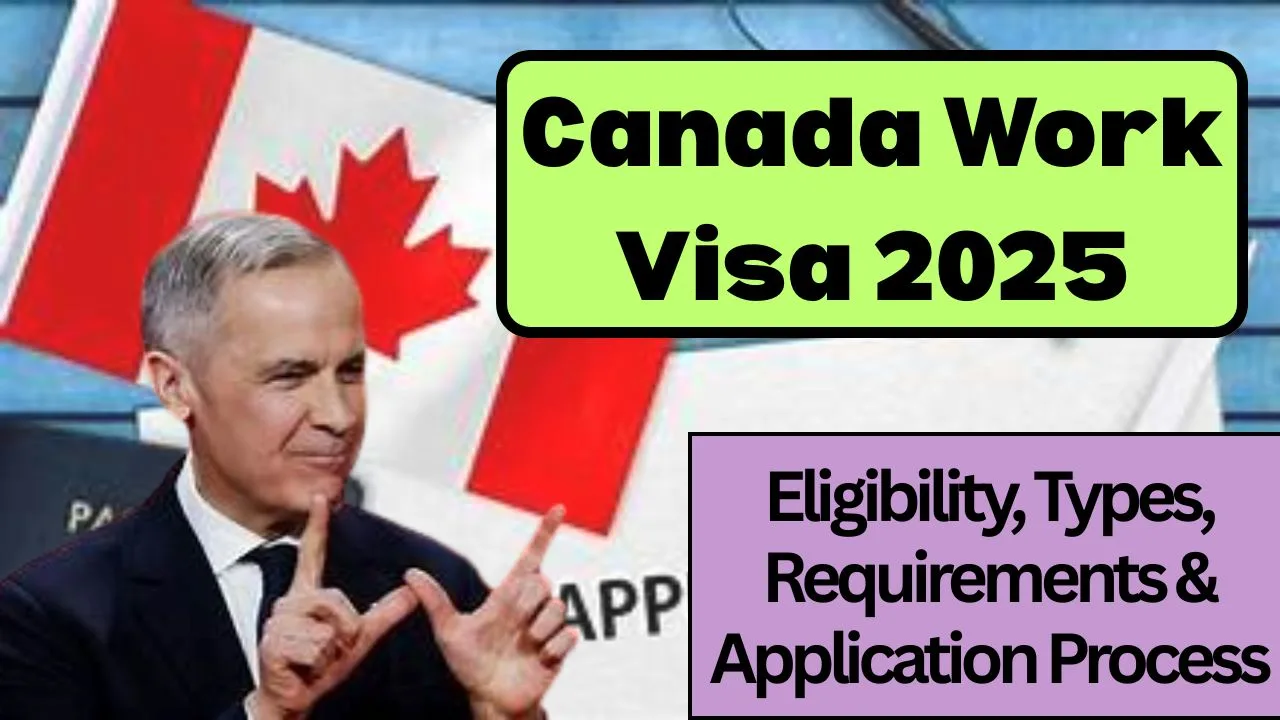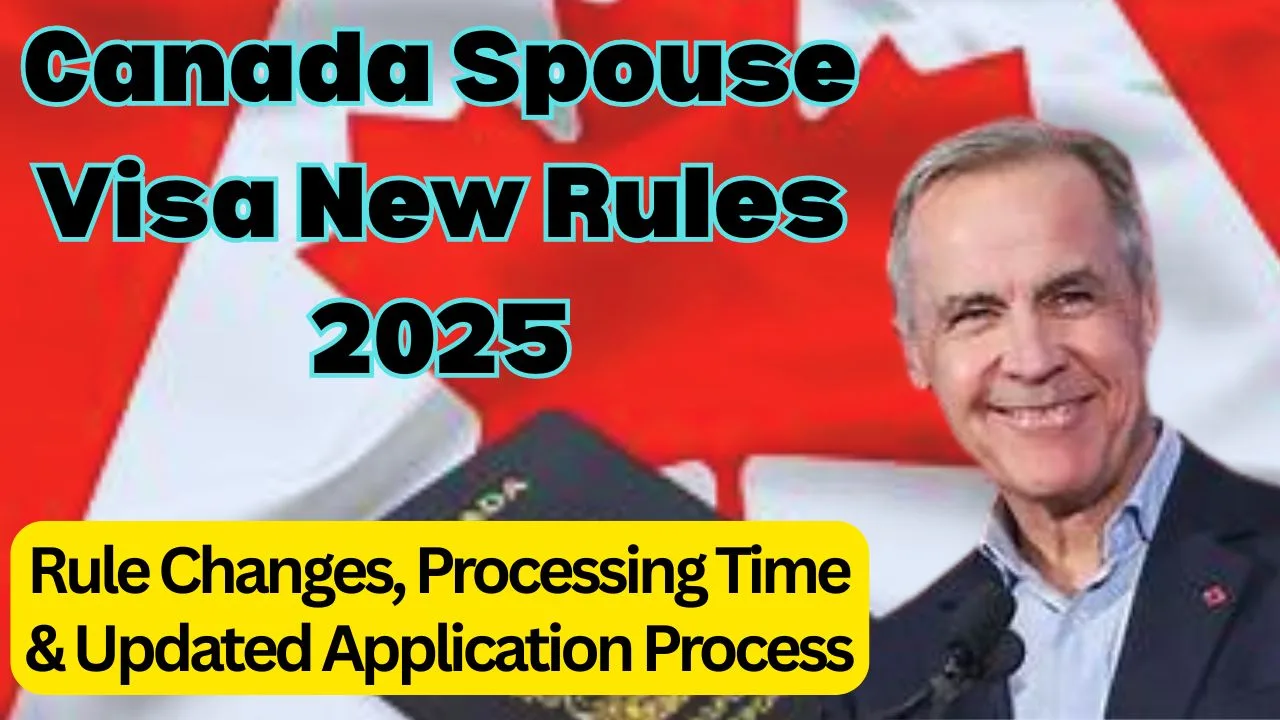If you’re dreaming about starting a new life in Canada and earning a living there, you’re not alone. With its welcoming immigration policies and strong job market, more people than ever are looking into the Canada Work Visa process in 2025. Whether you’re a skilled worker, recent graduate, or the spouse of someone already in Canada, the opportunity to work legally in the country has become more accessible than before.
In this guide, we’ll walk you through everything you need to know about applying for a Canada Work Visa, the types available, eligibility rules, and the steps involved in the process. This article is designed to answer your questions in a straightforward, real-world way, no confusing terms or vague information. Just what you need to know, right now, in 2025.
Canada Work Visa 2025: Everything You Need to Know
The Canada Work Visa in 2025 is not just a document—it’s a doorway to endless opportunities. Canada offers two main categories of work permits: the employer-specific permit, which ties you to one job and employer, and the open work permit, which gives you flexibility to work for different employers under certain conditions. These permits are offered to support a wide range of applicants, including skilled professionals, international graduates, and even spouses of temporary residents. The rules have changed this year, and it’s important to stay updated to avoid delays or missed opportunities.
Quick Overview of Canada Work Visa 2025
| Category | Details |
| Visa Types | Employer-Specific Work Permit, Open Work Permit |
| LMIA Requirement | Needed for employer-specific permits unless exempt |
| Common Applicants | Skilled workers, graduates, spouses, intra-company transfers |
| Key Documents Required | Job offer, medical clearance, police certificate, financial proof |
| Work Permit Fees | $155 (processing), $100 (open permit holder), $85 (biometrics) |
| LMIA Fees | Paid by employer, amount varies |
| Approval Rate (2025) | Approximately 69% based on recent IRCC stats |
| Processing Time | Varies by application type and location |
Types of Canada Work Visas
There are two major categories under the Canada Work Visa program:
Employer-Specific Work Permit:
This type of permit allows you to work only for the employer named in your visa. It includes details like your job title, location, and duration of employment. It generally requires an LMIA (Labour Market Impact Assessment), which proves that hiring a foreign worker won’t harm the Canadian labor market.
Open Work Permit:
This permit gives you the flexibility to work for almost any employer in Canada. You may still face some restrictions (like banned employers), but there’s much more freedom. Spouses of international students and skilled workers often apply for this type, along with graduates under the PGWP (Post-Graduation Work Permit) program.
Eligibility for Canada Work Visa
To be considered eligible for a Canada Work Visa in 2025, applicants must:
- Have a valid job offer if applying for an employer-specific permit
- Meet LMIA requirements unless exempt under special programs
- Be in good health and clear a medical exam, if required
- Provide a police clearance showing no criminal record
- Show proof of financial support during your stay in Canada
- Submit biometrics (fingerprints and photo) as part of the process
- Possess valid identification and legal immigration status, especially if applying from within Canada
Applicants with a strong case and accurate paperwork stand a much higher chance of fast approval.
Why It’s Important Canada Work Visa
Getting a Canada Work Visa isn’t just about landing a job—it’s about securing your future. With legal status to work in Canada, you’re protected under labor laws and minimum wage guarantees. Many foreign workers also use this as a stepping stone toward permanent residency.
The visa supports Canada’s economy by addressing labor shortages in key sectors like healthcare, construction, and tech. For families, the work visa often comes with added benefits: spouses can apply for open permits, and children may attend Canadian schools.
Payment Details for Canada Work Permit
While you won’t earn money through the visa, you will need to budget for the fees associated with applying:
| Fee Type | Amount (CAD) |
| Work Permit Processing Fee | $155 |
| Open Work Permit Holder Fee | $100 |
| Biometrics Fee | $85 |
| LMIA (Employer Pays) | Varies depending on job type |
These fees are standard in 2025 and are typically paid during the application submission process. Make sure you get a receipt, especially if you’re applying online through the IRCC portal.
Payment Schedule for Canada Work Visa
The application fees for a Canada Work Visa are paid upfront. That includes both your processing fee and any additional fees like biometrics. If your employer is required to get an LMIA, they must pay that fee before you submit your application. Processing times vary but submitting all documents properly the first time helps speed things up.
Latest Updates on Canada Work Visa 2025
In 2025, IRCC made several key changes to the Canada Work Visa system:
- The Post-Graduation Work Permit program now includes more in-demand fields of study and has removed outdated ones.
- Some employer-specific permit holders can now switch jobs or roles without starting a new application, as long as they meet certain conditions.
- The approval rate for work visa applications sits at around 69%, showing the growing demand and improved efficiency in the process.
Keeping track of these updates is crucial, especially if you’re planning to apply this year.
Common Scenarios for Work Permit Applicants
You may be eligible for a Canada Work Visa in 2025 if you fall into one of these categories:
- You’re a skilled worker with a Canadian job offer and LMIA support.
- You’re a recent graduate applying for PGWP.
- You’re the spouse of a student or skilled worker on a valid permit.
- You’re an intra-company transferee moving from your company’s branch abroad to one in Canada.
- You’re a temporary resident applying from within Canada with legal status.
Each of these categories has different documentation and requirements, but all lead to the same goal: working legally in Canada.
Final Thought
Getting a Canada Work Visa in 2025 can truly change your life. With the right information, preparation, and documentation, your chances of approval are better than ever. Whether you’re just starting your journey or looking to bring your family along, this visa opens up opportunities beyond just work—it opens the door to your future in Canada.
If this article helped you, leave a comment or share it with someone who needs it. And if you’re curious about your compatibility with Canada’s lifestyle, why not explore your horoscope or check out more guides on immigration?
FAQs
No, some permits like intra-company transfers or under trade agreements are LMIA-exempt.
Yes, your spouse may be eligible for an open work permit depending on your visa type.
It depends on where you’re applying from, but most are processed within a few weeks to a few months.
Yes, in some cases, you can change jobs without reapplying, especially under new 2025 guidelines.
Absolutely. Many PR programs give extra points or preference to those with Canadian work experience.











